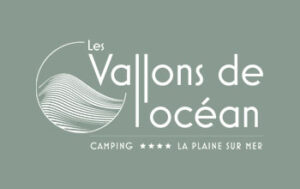Fishing in Loire-Atlantique
What can be fished on foot in Loire-Atlantique ?
The alternation of rocky creeks and large sandy areas makes the Loire-Atlantique coastline a popular destination for fishing on foot. There are many burrowing shellfish such as cockles, razor clams and clams. On the rocks hang mussels, barnacles, wild oysters, whelks and winkles. The pools of water left after high tide are home to grey shrimp (bouquet) and pink shrimp. Some species, such as abalone, sea urchins and scallops, can only be fished from November to March for their preservation.
The tools used for fishing on foot are subject to regulations: the traditional claws, knives, soup spoon and fork, as well as the sea urchin grabber and the umbrella whale are authorized and will be useful. The quotas of collection are generous and promise you beautiful convivial meals, with for example 3 kg for clams, 4 kg for cockles, 5 kg for mussels, 2 kg for scallops and 3 kg for whelks. Size restrictions are also in effect. Nature outings on the foreshore and initiations to fishing on foot are proposed in the various stations of the Jade Coast.
The best fishing spots in Loire-Atlantique
Each beach and environment is known to be home to certain species of shellfish. In Loire-Atlantique, some spots are particularly popular for shore fishing, not only for the quantity and variety of shellfish found there, but also for their sanitary quality.
On the Pornic side, the rocky coast between the beach of the source and that of the Joselière is ideal for fishing for shellfish such as periwinkles, wild oysters and limpets, as well as for fishing with dip nets for grey and pink shrimps. Préfailles is also home to famous spots: the sector of Pointe Saint-Gildas is particularly prized for mussels, clams, periwinkles and shrimp. The large sandy areas of the bay of La Baule are ideal for cockle and clam fishing, as well as the spot of Pen Bron in La Turballe, near the salt marshes.
On the Piriac side, the rocky environment is home to oysters, mussels and periwinkles, as well as shellfish in the pools and under the rocks. The same environment awaits you at Ker-Elisabeth in La Turballe.
Prepare your fishing trip well
Going fishing on foot requires some precautions. For example, you will need equipment to collect the shells, but also a bucket to hold them. The essential tools to fish for burrowing shellfish in the foreshore are the hand scraper and the serfouette. For winkles on the rocks, your bucket will do! A knife will be necessary for barnacles and oysters. Don’t forget to leave with boots, as some areas can be very muddy. If you’re fishing with a dip net, you’ll also need to get your feet in the water.
The tides are dangerous: for a fishing trip, it is advisable to arrive at the site two hours before the end of the falling tide, and to start your return to the beach before the beginning of the rise. Take something with you to keep track of the time, because it’s easy to get caught up in the game! The rising sea can be surprising: it is possible to find yourself quickly surrounded by water because you are on a slightly elevated sandbank or a rocky islet.
When you choose your fishing spot, check the authorizations, both for sanitary and environmental reasons. Also be sure to read the quotas and minimum sizes allowed for each species. So take along something to measure with! When fishing, respect the fragile environment of the foreshore: do not pull up seaweed or aquatic plants, do not turn over stones, and put back the seaweed and rocks that have been lifted so as not to disturb a precarious balance.




